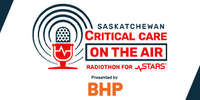Saskatchewan’s Minister of Mental Health and Addictions was taking part in the eighth annual Recovery Capital Conference of Canada in Calgary Wednesday and Thursday. A major focus of the conference is the Alberta Recovery Model, similar to Saskatchewan’s Action Plan for Mental Health and Addictions, and Ontario’s Roadmap to Wellness. At the conference, Tim McLeod and the ministers of mental health and addictions for Ontario and Alberta announced that they will be collaborating to help drug addicts recover more efficiently. Although they won’t be sharing resources at this time, the three agree to share ideas, as they see eye to eye on many initiatives used to battle severe drug addiction. Both ministers of Saskatchewan and Alberta voiced their concerns over safe consumption sites, stating that they promote harm production rather than harm reduction.
Minister from Alberta, Dan Williams, says when it comes to harm reduction, certain initiatives can cause more harm than good. “When it comes to something like harm reduction, it plays a part in our model of course, but if you’re talking not about harm reduction, and instead about the harm production policies of safe supply, that is something Albert’s made illegal. We will always oppose, and that needs to be made abundantly clear.”
Minister McLeod echoed his remarks.”We are shifting to a recovery-oriented system of care that is focused on wrapping supports around the individual, so that we are treating the individual and not the addiction. We need to identify what those specific individual needs, and I would say that what they need is not more drugs.” McLeod added that the path to recovery might cross borders into neighboring provinces, making the need for interprovincial cooperation that much more vital to saving lives. “If we have a unified approach where we are all focused on a recovery-oriented system of care and recovery model, I think that is better serving the people using those systems.”
Back in January, Minister Tim McLeod said the government would no longer provide money to third-party organizations for drug pipes, while needles would be provided one at a time, so one couldn’t be handed out until the other is brought back.
Executive Director of Prairie Harm Reduction, Kayla DeMong, understands that the optics may look like they are enabling people, but what they are actually doing is helping people to stay alive, and pointing them in the direction of recovery. The Federation of Sovereign Indigenous Nations First Vice-Chief, David Pratt, who is responsible for the Health Portfolio, says Saskatchewan’s HIV rates are among the highest in North America and nearly 80 per cent in this province are Indigenous.
There is an increased risk of transmitting HIV with a dirty needle. He stated back in January that the government’s approach will do nothing to address the HIV and addictions crisis because it blames the victim and doesn’t get to the root causes.













